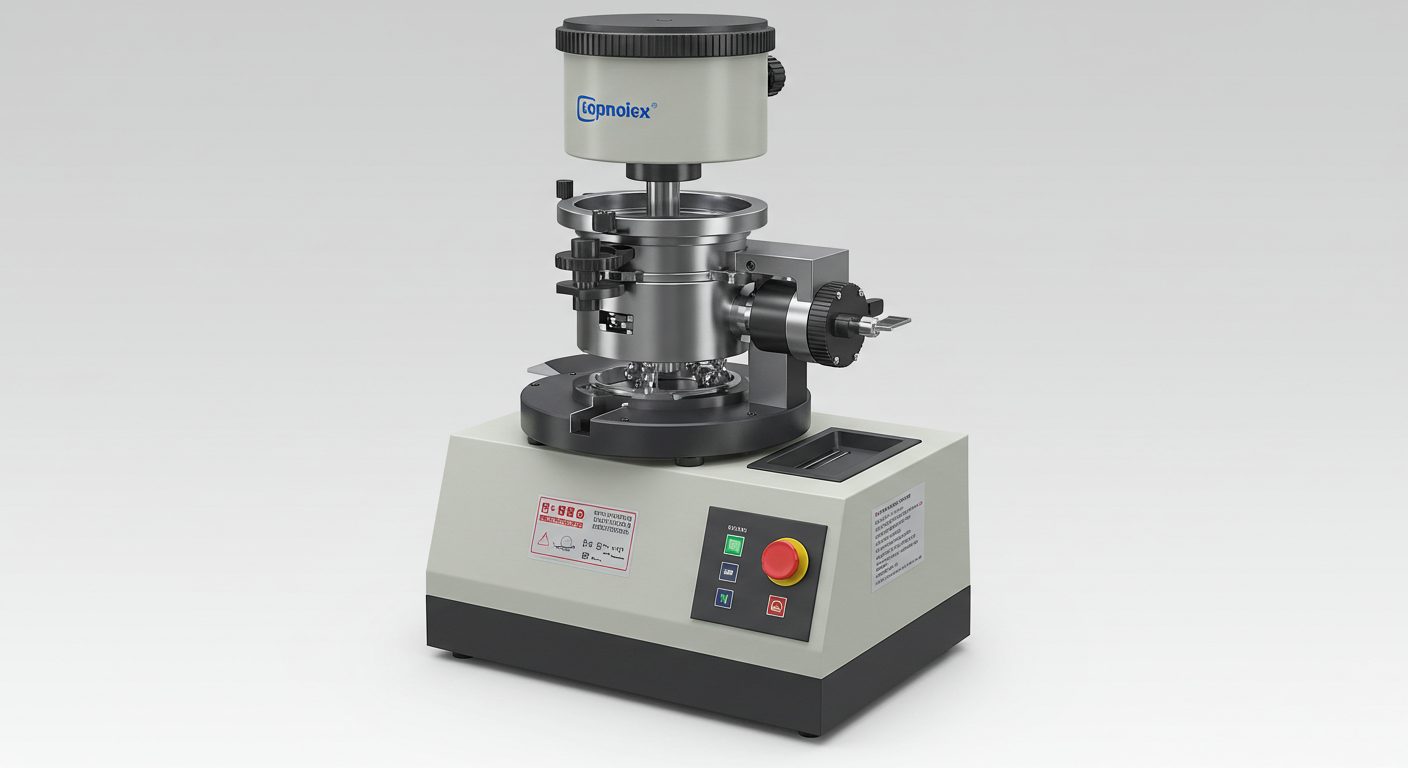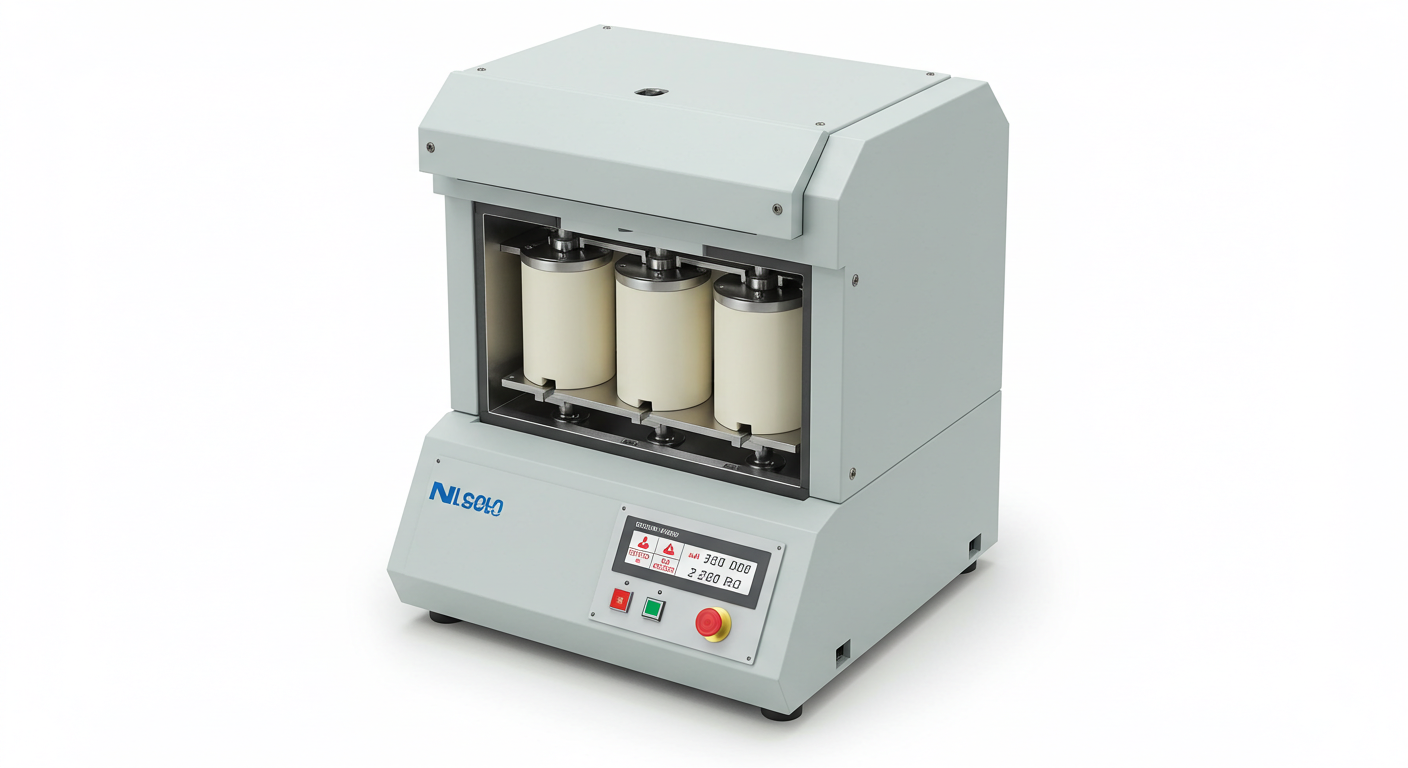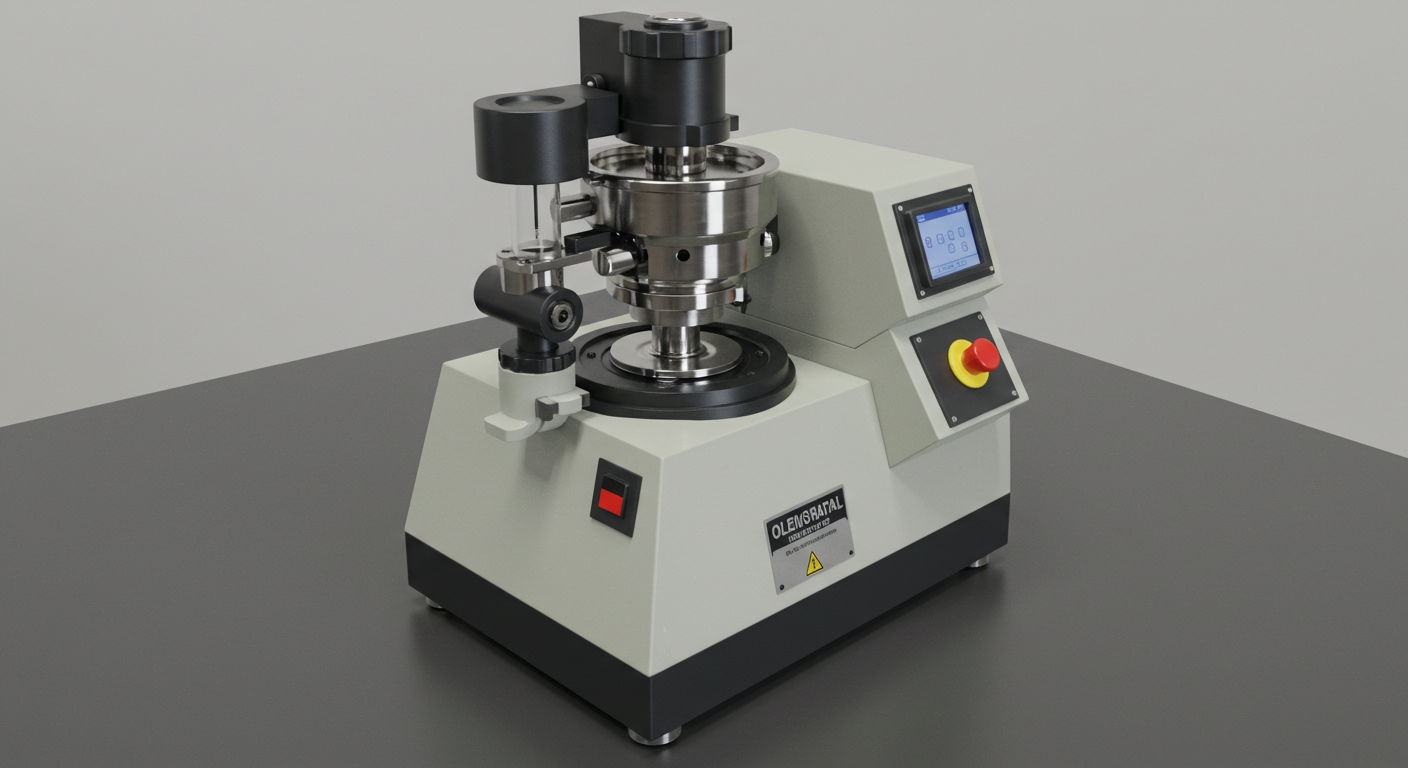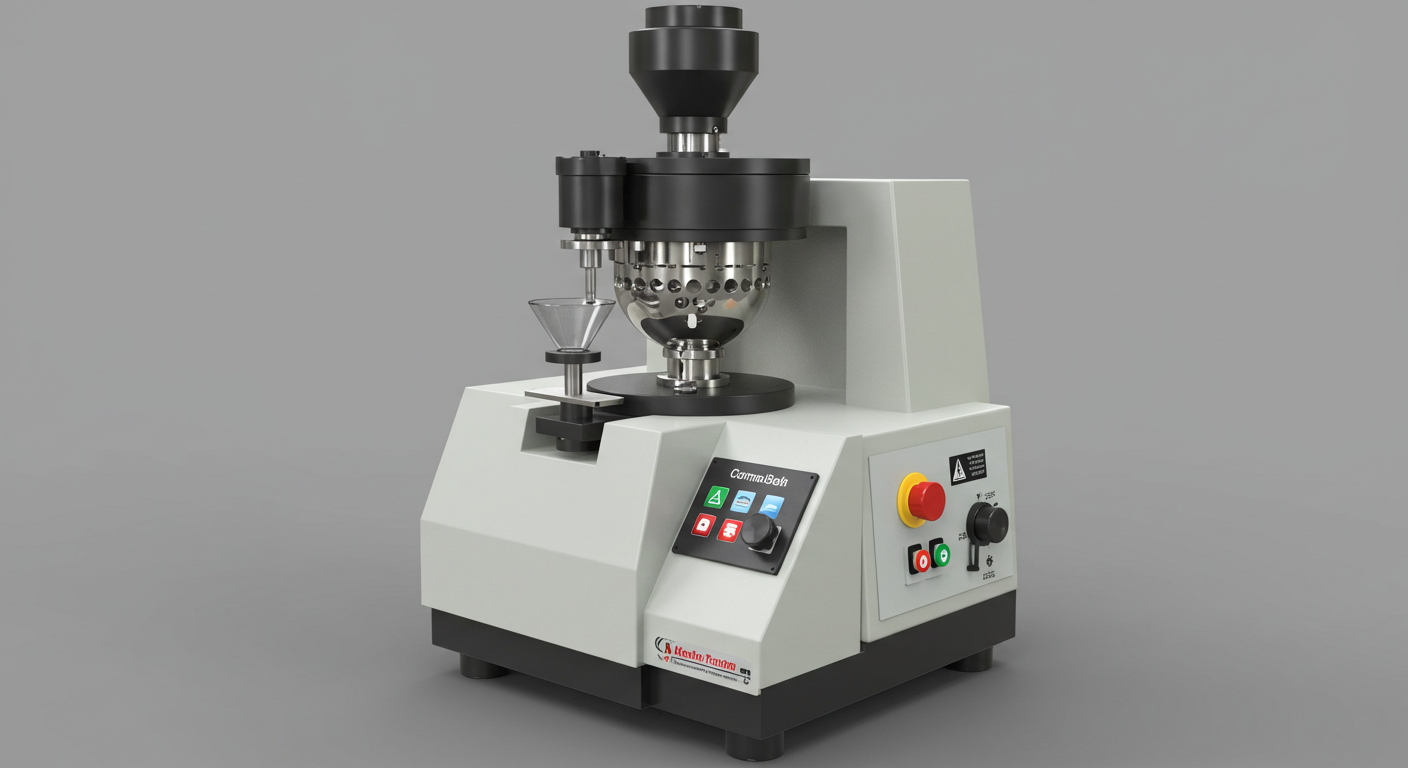What is planetary ball mill? It's a sophisticated piece of equipment used in various scientific and industrial applications for grinding and mixing materials. The term often arises when discussing particle size reduction or material synthesis in research and development. So, What is a planetary ball mill used for? Planetary ball mills excel at achieving extremely fine particle sizes, often in the nanometer range, making them indispensable in fields ranging from pharmaceuticals to materials science. This article will delve into the intricacies of planetary ball mills, exploring their principles, applications, and how they compare to other types of milling equipment.

Understanding Planetary Ball Mills
Planetary ball mills are a type of ball mill that employs a unique motion to achieve superior grinding performance. They differ significantly from traditional ball mills in their design and operational principles. What is the difference between a ball mill and a planetary ball mill? This difference is fundamental to understanding their respective strengths and limitations.
Key Components of a Planetary Ball Mill
A typical planetary ball mill consists of the following essential components:
Sun Wheel: A central rotating disc on which the grinding jars are mounted.
Grinding Jars: Cylindrical containers that hold the sample and grinding media (balls).
Grinding Balls: Spherical media made of materials like steel, ceramic, or tungsten carbide, used to impact and grind the sample.
Drive System: A motor and gear system that rotates the sun wheel and, consequently, the grinding jars.
The Planetary Ball Mill Working Principle
Planetary ball mills operate on the principle of planetary motion. The grinding jars are positioned on a rotating sun wheel. As the sun wheel rotates, the jars also rotate around their own axes, but in the opposite direction. This combined motion creates intense centrifugal forces within the jars, causing the grinding balls to impact the sample with high energy. This impact energy is far greater than that achieved in a conventional ball mill, resulting in faster and finer grinding. The PlanarWhat is planetary ball mill working principle is crucial to the operation of these mills.
Comparing Planetary Ball Mills to Other Types of Ball Mills
To fully appreciate the capabilities of planetary ball mills, it's helpful to compare them to other types of ball mills. What is the difference between a ball mill and a planetary ball mill? is a recurring theme when discussing milling techniques.
Conventional Ball Mills
Conventional ball mills consist of a rotating cylindrical drum partially filled with grinding media. The drum rotates at a relatively slow speed, causing the balls to tumble and grind the sample. While simple and robust, conventional ball mills are less efficient than planetary ball mills at achieving fine particle sizes. They are often used for larger-scale applications where throughput is more important than extreme fineness.
Vibratory Ball Mills
Vibratory ball mills use high-frequency vibrations to agitate the grinding media and sample. These mills offer faster grinding rates than conventional ball mills but are generally less powerful than planetary ball mills. They are suitable for a range of applications, including sample preparation for analytical techniques.
What are the different types of ball mills?
Aside from conventional, planetary, and vibratory ball mills, there are other specialized types, including:
Attritor Mills: Use a rotating impeller to agitate the grinding media.
Rod Mills: Employ long rods as grinding media, suitable for coarser grinding applications.
Tube Mills: Similar to ball mills but with a longer cylindrical drum.
The choice of ball mill depends on the specific application, desired particle size, and throughput requirements.
Applications of Planetary Ball Mills
What is a planetary ball mill used for? Planetary ball mills have a wide range of applications across various scientific and industrial fields.
Materials Science
Planetary ball mills are widely used in materials science for synthesizing nanomaterials, producing composite materials, and refining the particle size of powders. They are particularly valuable for mechanochemical synthesis, where chemical reactions are induced by mechanical energy.
Pharmaceuticals
In the pharmaceutical industry, planetary ball mills are used for micronizing drug particles to improve bioavailability, preparing drug formulations, and synthesizing new pharmaceutical compounds.
Geology and Mining
Planetary ball mills are used in geology and mining for preparing samples for analysis, grinding ores, and extracting valuable minerals.
Ceramics
In the ceramics industry, planetary ball mills are used for grinding raw materials, preparing ceramic slurries, and synthesizing ceramic powders.
Chemical Synthesis
Planetary ball mills are employed in chemical synthesis for inducing chemical reactions, preparing catalysts, and synthesizing new chemical compounds.
Factors to Consider When Purchasing a Planetary Ball Mill
When considering the purchase of a planetary ball mill, several factors should be taken into account to ensure that the selected mill meets your specific requirements.
Jar Material and Volume
The material and volume of the grinding jars are crucial considerations. Common jar materials include stainless steel, agate, zirconia, and tungsten carbide. The choice of material depends on the hardness of the sample and the potential for contamination. The jar volume determines the maximum sample size that can be processed.
Grinding Ball Material and Size
The material and size of the grinding balls also influence the grinding performance. Common ball materials include steel, ceramic, and tungsten carbide. Smaller balls are generally used for finer grinding, while larger balls are used for coarser grinding.
Rotation Speed
The rotation speed of the sun wheel and grinding jars affects the impact energy and grinding rate. Higher rotation speeds generally result in faster grinding but can also generate more heat. The Planetary ball mill working principle relies on the rotation speed.
Planetary Ball Mill Price
The cost of a planetary ball mill can vary significantly depending on the size, features, and manufacturer. It's important to consider your budget and choose a mill that offers the best value for your money. Remember to factor in the cost of accessories, such as grinding jars and balls, and the potential for maintenance and repairs. What is planetary ball mill for sale?
Control System
The control system of the planetary ball mill allows you to set and monitor various parameters, such as rotation speed, grinding time, and temperature. A sophisticated control system can enhance the reproducibility and precision of your experiments.
Safety Features
Safety features are essential for protecting the operator and preventing damage to the equipment. Look for mills with features such as overload protection, emergency stop buttons, and safety interlocks.
What is planetary rolling mill?
While similar in name, a planetary rolling mill is a different type of equipment used in metal forming processes. It involves a central roll surrounded by multiple planetary rolls that deform the metal workpiece. This is distinct from the grinding and mixing actions of a planetary ball mill.
Planetary Ball Mill for laboratory
A Planetary Ball Mill for laboratory use is a scaled-down version of industrial planetary ball mills, designed for research and development in laboratory settings. These mills are typically compact, easy to operate, and offer precise control over grinding parameters.
Across International Planetary Ball Mill
Across International Planetary Ball Mill systems offer a range of planetary ball mills suitable for various applications. Be sure to compare various brands and models. Consider features, price and intended application before deciding which mill is best. When determining what is a planetary ball mill used for, it is important to consider the types of manufacturers that supply these mills.
Planetary Ball Mill PM 100
The Planetary Ball Mill PM 100 refers to a specific model of planetary ball mill, which is often used for grinding. Planetary Ball Mill PM 100 mills are often smaller mills for benchtop lab work. Different mills will have various jar sizes and operating speeds. Ensure your choice can do the intended job.
Maintaining Your Planetary Ball Mill
Proper maintenance is essential for ensuring the longevity and optimal performance of your planetary ball mill. Regular maintenance tasks include:
Cleaning the Grinding Jars and Balls: Thoroughly clean the grinding jars and balls after each use to prevent cross-contamination and ensure accurate results.
Lubricating Moving Parts: Lubricate the moving parts of the mill according to the manufacturer's instructions to reduce friction and wear.
Inspecting for Wear and Damage: Regularly inspect the mill for signs of wear or damage, such as worn bearings, cracked jars, or damaged balls. Replace any worn or damaged parts promptly.
Calibrating the Control System: Calibrate the control system periodically to ensure accurate readings and precise control over grinding parameters.
Safety Precautions When Using a Planetary Ball Mill
Planetary ball mills can generate significant heat and pressure, so it's important to follow proper safety precautions to prevent accidents. These precautions include:
Wearing Appropriate Personal Protective Equipment (PPE): Wear safety glasses, gloves, and a lab coat to protect yourself from potential hazards.
Following the Manufacturer's Instructions: Carefully read and follow the manufacturer's instructions for operating the mill.
Avoiding Overfilling the Jars: Do not overfill the grinding jars, as this can cause the mill to overheat or malfunction.
Using Proper Ventilation: Ensure proper ventilation in the work area to prevent the buildup of dust or fumes.
Stopping the Mill Before Opening the Jars: Always stop the mill completely before opening the grinding jars.
Troubleshooting Common Problems
Despite proper maintenance and precautions, problems can sometimes arise when using a planetary ball mill. Here are some common problems and potential solutions:
Insufficient Grinding: If the sample is not grinding to the desired particle size, try increasing the grinding time, increasing the rotation speed, or using smaller grinding balls.
Overheating: If the mill is overheating, try reducing the rotation speed, reducing the grinding time, or using a cooling system.
Contamination: If the sample is being contaminated, try using grinding jars and balls made of a different material or cleaning the jars and balls more thoroughly.
Excessive Noise: If the mill is making excessive noise, try lubricating the moving parts or replacing worn bearings.
Future Trends in Planetary Ball Mill Technology
Planetary ball mill technology continues to evolve, with ongoing advancements in materials, control systems, and automation. Some of the future trends in this field include:
Improved Jar Materials: Development of new jar materials with higher strength, wear resistance, and chemical compatibility.
Advanced Control Systems: Integration of advanced control systems with features such as real-time monitoring, feedback control, and automated parameter optimization.
Automation: Automation of the grinding process, including automated sample loading, unloading, and jar cleaning.
Miniaturization: Development of miniaturized planetary ball mills for use in microfluidic devices and other small-scale applications.
What is a planetary ball mill used for
To reiterate, What is a planetary ball mill used for?, it serves as a robust and highly effective tool for milling and grinding materials down to extremely fine particle sizes. Its applications are widespread, spanning across various scientific and industrial sectors.
Conclusion: The Power and Versatility of Planetary Ball Mills
Planetary ball mills are powerful and versatile tools for grinding and mixing materials to extremely fine particle sizes. Their unique operating principle, wide range of applications, and ongoing technological advancements make them indispensable in many scientific and industrial fields. By carefully considering your specific requirements and following proper maintenance and safety procedures, you can harness the full potential of planetary ball mills to achieve your desired results. The key to success lies in understanding the intricacies of What is planetary ball mill, What is a planetary ball mill used for?, and how it compares to other milling technologies.




